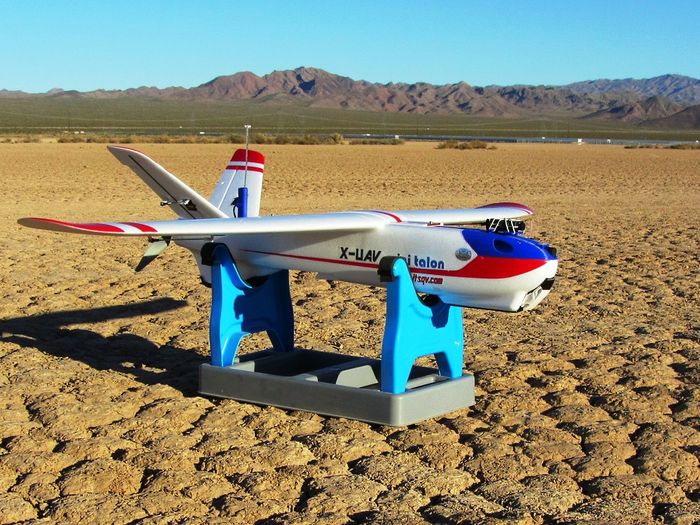There are a wide variety of RC planes on the market that cater to different budgets and preferences. The most expensive models can cost upwards of $500, while the more affordable options may be as low as $50. The range of RC planes also varies in terms of size, with some being small enough to fit in the palm of your hand while others are over six feet long.
In terms of capabilities, some RC planes are designed for aerobatics and racing, while others are better suited for leisurely flying or carrying payloads.
The range of RC planes is determined by the transmitter, which has a limited range. The average transmitter can control an RC plane within a radius of about 300 feet. However, there are some transmitters that can extend the range to up to 3 miles.
Rc Plane Speed
The speed of a RC plane can be determined by a number of factors, most notably the size and weight of the aircraft. A small, lightweight plane will typically have a higher top speed than a larger, heavier aircraft. Additionally, the type of engine powering the plane will also affect its maximum velocity; electric motors tend to be much slower than gas or nitro engines.
Finally, how aerodynamic the plane is plays a role in how fast it can fly; sleek, streamline designs are able to reach higher speeds than boxier planes.
So what is considered “fast” for a RC plane? That really depends on your definition.
For some hobbyists, anything over 50mph is considered pretty speedy. Others may consider anything over 100mph to be fast. And then there are those who race their planes and are always striving for ever-higher speeds; for them, 200mph+ is where the real fun begins!

Credit: ardupilot.org
How Far Does 2.4 Ghz Rc Go?
Most 2.4 GHz RCs have a range of about 100 meters. However, there are some newer models that can go up to 300 meters. If you’re looking for a long-range RC, make sure to do your research before purchasing one.
Can You Fly Rc Planes Anywhere?
No, you cannot fly RC planes anywhere. There are many places where flying an RC plane is not allowed, such as near airports or in national parks. Before flying your RC plane, be sure to check the local laws and regulations to see where you are and are not allowed to fly.
How High Can Rc Jets Fly?
Jet engines are the powerhouses of today’s aircraft. They propel everything from commercial airliners to military fighters to private business jets. But how high can they fly?
The answer, it turns out, is quite complicated. There are many factors that affect how high a jet engine can take an airplane. One is the density of the atmosphere: as altitude increases, air becomes thinner and provides less resistance for the engine to push against.
This means that a jet engine at high altitude will produce less thrust than it would at lower altitudes.
Another factor is temperature. The colder the air, the more dense it is; thus, cold temperatures can actually help a jet engine perform better than warm temperatures.
However, there is a point at which the air becomes so cold that it actually freezes solid, and this can cause serious damage to an engine.
Finally, there are limits on how much fuel an airplane can carry. The higher an airplane flies, the longer it takes to get there; thus, a plane needs more fuel to reach very high altitudes.
But there’s only so much room on an airplane for fuel tanks!
So how high CAN jet engines take airplanes? It depends on all of these factors and more; in general, though, most commercial jets can fly up to about 40-45 thousand feet (12-14 kilometers).
Military jets are often designed to go even higher: some versions of the F-22 Raptor fighter jet have been known to exceed 60 thousand feet (18 kilometers). And in 2012, Virgin Galactic’s SpaceShipTwo reached an astonishing altitude of 71 thousand feet (22 kilometers) – making it the highest-flying “jet” engine ever!
How Long of a Runway Does an Rc Plane Need?
In order to take off, an RC plane needs a runway that is at least as long as the plane itself. The amount of time it takes for an RC plane to take off will vary depending on the size and weight of the plane, but generally speaking, you should expect to need a runway that is at least 50 feet long. If you are flying a larger or heavier plane, you may need a runway that is even longer.
Once your plane is in the air, you will have more flexibility in terms of where you can land. However, it is always best to have a clear and open area that is at least as long as your plane in case you need to make an emergency landing.
Range Check Your RC Aircraft | Quick Tip | Motion RC
Conclusion
The range of RC planes spans from very small and lightweight indoor flyers to large scale outdoor models. Indoor RC planes are typically made of foam or balsa wood and have a wingspan of around 12-24 inches. Outdoor RC planes can be made from a variety of materials, including plastic, fiberglass, and even metal, and have wingspans that range from 2-6 feet or more.
There is also a wide variety in terms of price, with indoor models costing as little as $30 and high-end outdoor models running upwards of $1000.